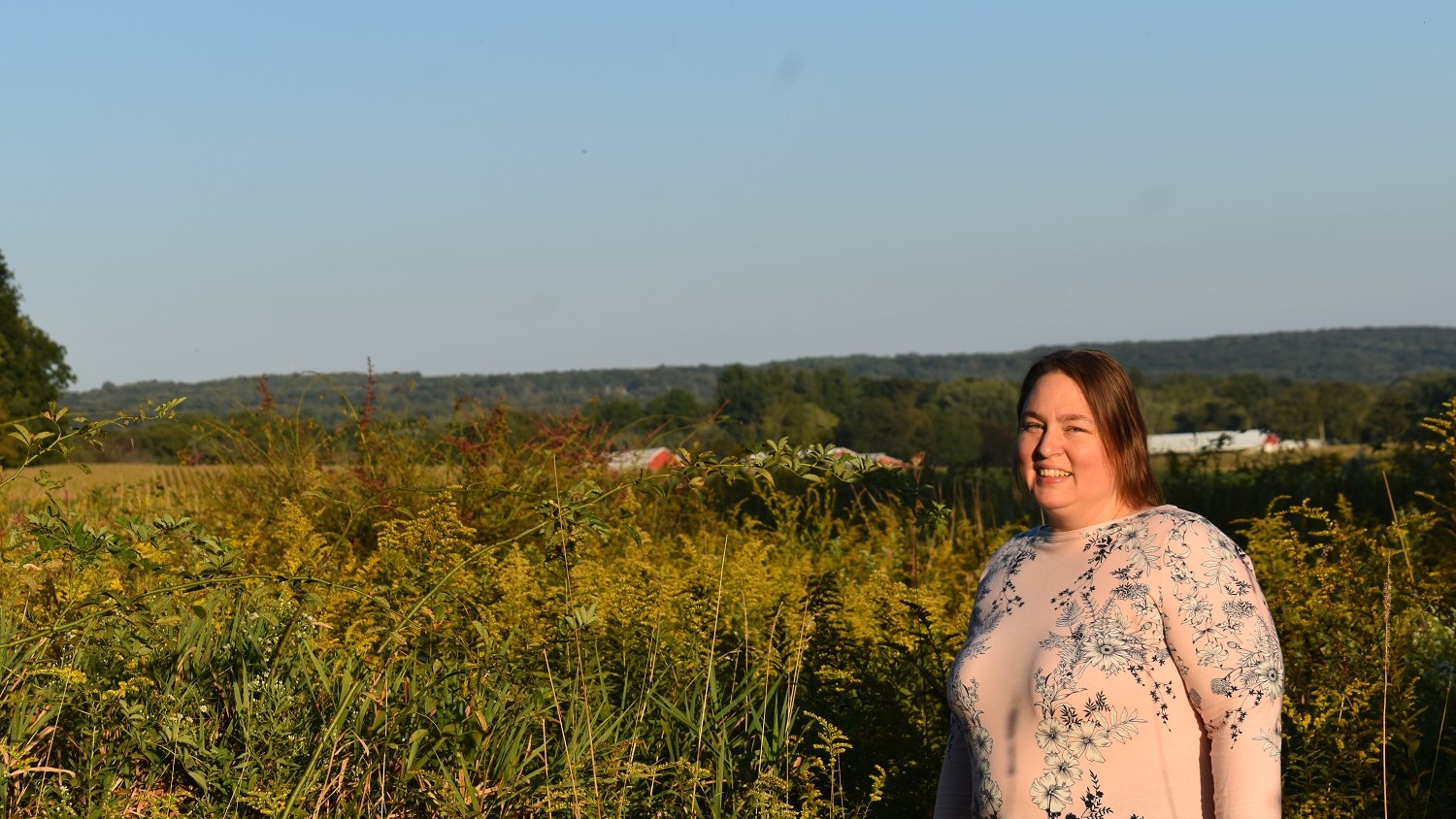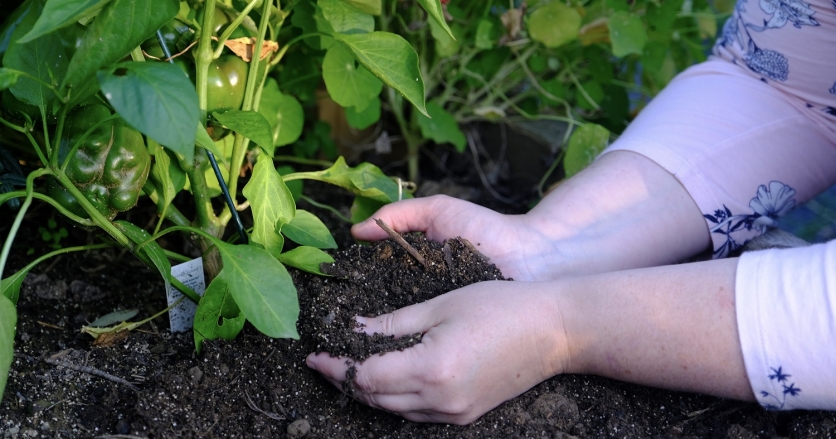Gillian Julius Sees a Bright Future for Local Agriculture
The excitement Gillian Julius feels for regenerative agriculture animates her face and dances out through her hands. Talking about soil brightens her contagious smile so much that you’d think she was talking about a loved one.
Which, in a sense, she is.
Given her expertise, it’s surprising that she’s had nearly a 20-year career in software, not soil. But Julius, an analyst at Erie Insurance in Erie, PA, sees numerous connections between her daily work and her passion for regeneration.
“It has a lot do with tapping into people’s intrinsic motivation and looking for the ability of the system to guide itself,” she says. “You’re never the boss; you’re creating conditions for collaboration and creativity to happen.”
Since her passion for regenerative agriculture was ignited about five years ago, Julius has worked with initiatives through One Planet Education Network—a sustainable-agriculture program for primary and secondary schools working in Africa, Australia, Haiti and the U.S.—and Kiss the Ground—the organization behind the popular documentary released in 2020. Last spring, she taught an online course called “Waking Up the Dirt: Lessons in Soil Regeneration,” hosted by the Land & Leadership Initiative, a school that offers education “designed to give [students] the tools to facilitate, lead, and support soil health initiatives in [their] own region,” according to its website. She also serves as a consultant to local farmers looking to transition to regenerative practices.
“Playing the role of catalyst and coach is my default pattern,” she says. “I feel pulled towards being that for other people who are working land: troubleshooting and finding a path forward with somebody who is also beginning to understand the land in this way.”
WHAT IS REGENERATIVE AGRICULTURE?
While regenerative agriculture currently lacks an official definition, the Center for Regenerative Agriculture and Resilient Systems at Cal State Chico describes it as:
“an approach to farm and ranch management that aims to reverse climate change through practices that restore degraded soils. By rebuilding soil organic matter and soil biodiversity we significantly increase the amount of carbon that can be drawn down from the atmosphere while greatly improving soil fertility and the water cycle. Practices involved in Regenerative Agriculture include notill/minimum tillage techniques, the use of cover crops, crop rotations, compost, and animal manures, the inoculation of soils with composts or compost extracts to restore soil microbial activity, and managed grazing.”
Regenerative agriculture is all the rage. And as is typical when things get trendy, it’s often oversimplified. Corporations adopt a few practices to exploit in marketing. Policymakers advocate for incentivizing certain actions, such as paying farmers to incorporate cover crops.
But Julius says it’s challenging to define regenerative agriculture as a set of practices. “People wonder, ‘If I’m planting cover crops, does that mean I’m doing regenerative agriculture?’ Well, are you regenerating the ecosystem? It depends on what else you’re doing.”
She adds that “When you look at the different approaches people are taking to create regenerative outcomes, there are so many different entry points. But they all support the vitality of the underlying living system one way or another.”
Ultimately, she says, “It’s not that the practice creates the outcomes. It’s that the practice influences the health of the living system. And then the living system creates the outcome.
“Think of it in terms of human health: The doctor doesn’t heal you. Your body heals itself. The doctor can intervene in ways that enable your body to do the healing, but the doctor is never going to do the healing.”
A GLOBAL MOVEMENT
Julius’s own interest in system-level healing was sparked when she came across the work of Daniel Christian Wahl, author of Designing Regenerative Cultures. “Wahl observed that our human systems tend to have the side effect of depleting the capacity of earth to sustain life, and asked why we can’t create systems that have the opposite effect. We see that in natural systems—the work of other creatures often results in an increase in biodiversity and the carrying capacity of the landscape.
“That connected deeply for me,” she says. “I had been thinking about climate change and wondering what I could do to help solve that problem. I realized that there was a calling for me, more broadly connected to healing living systems.”
Julius traveled to Schumacher College, an institution in Devon, England, focused on ecological learning, where she did coursework with Wahl. Around the same time, regenerative agriculture was appearing in mainstream outlets like the New York Times.
She decided to channel her curiosity into learning as much as she could around soil, taking courses online, traveling to conferences in California and doing workshops with cutting-edge experts.
“The more I learned, the more I realized that the crisis we’re facing isn’t only about excess fossil fuel burning,” she explains. “It’s the loss of biodiversity—the loss of ecosystem function—that is the core issue.
DIVERSITY IS KEY
“I stopped thinking about this just in terms of carbon, and shifted to realizing that living things manage landscapes. They manage climate, rainfall, soil structure, nutrient cycling—they run everything. It’s like the microbiome in our bodies. Even as individuals, we are a community. Ecosystems are no different.”
These vibrant communities are what create resilience, Julius explains. “When those living communities become too simplified, as with a monocrop, we start to lose that regulating function and begin a downward spiral of degradation. Reintroducing more of that lost diversity is key to turning things around.”
A practice like intercropping, or growing two or more crops simultaneously in the same plot, would go a long way locally, Julius says, particularly in protecting our Great Lake from polluting fertilizer runoff. “It would be transformative for this region if we could get a major portion of growers to intercrop diverse cover crops and wean off fertilizer inputs. And it would save money and help them be more profitable. It benefits both the community and the producers.”
Julius has come across growers who are planting 25–30 percent of their land not in their cash crop. “The increase in pollination rates and pest control that come as side benefits are generally outweighing the loss of the land. It’s a different way of thinking.”
And different is what we need, as we adapt to climate change in our prime agricultural regions.
“As California continues to desiccate and the Midwest declines in fertility because of the way it’s being managed, there’s a question of what happens for this region in terms of food production,” Julius says. One asset she names is our region’s heritage as a diverse and productive fruit belt. Another is our critically important access to fresh water. “With climate change, we are impacted, but we don’t have the severe drought and fire risk that some regions have. So as California becomes less able to produce much of the food we eat, is there opportunity for us here to rebuild those orchards? And can we do it in a way that is regenerative—not only to the ecosystem, but also to the people, communities and economy here?”
If we can, Julius will surely be one of the visionaries leading us. “The art of change is figuring out how to solve the problems of today in a way that makes tomorrow possible,” she summarizes. “I think about that all the time.”






